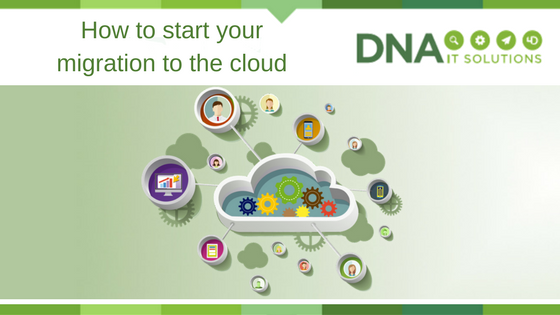Once the decision has been made to move to the cloud a business will be anxious to get started on the project.
The first steps can sometimes seem the most difficult but once you have a plan in place and somebody to walk with you along the journey, it seems less daunting.
Make a list
It might sound obvious but it is always a good idea to take a look at the applications you already use. Once you have this list you can put them in various categories and in order of critical importance. Some of the categories could center around risk, general operations or security.
Cloud Provider
Microsoft Azure are world class providers of cloud computing options and they give some advice when it comes to approaching applications and categorising them.
They suggest two different assessments: A top down approach which focuses on where applications should go to best serve the business. Then a bottom-up approach which is concerned more with the technical feasibility of where an application could go and still function.
The Top-Down Assessment
The top-down approach starts with an evaluation of the various technical and security aspects of each application:
- Categorisation of data, compliance, sovereignty and security risk requirements
- Current complexity of interface, authentication, data structure, latency requirements, coupling and application life expectancy of the application architecture
- Operational requirements like SLAs, integration, maintenance windows, monitoring and insight
Once analysed, all of these aspects generate an overall score that reflects the difficulty of moving that application to the cloud. The top-down assessment also involves evaluating the application’s financial benefits:
- Operational efficiencies, TCO, return on investment (or similar measurements)
- Overall computer load, seasonal fluctuations in usage levels, types of users (casual vs. expert, always online vs. only occasionally), necessary levels of scalability or elasticity
- Business continuity and resiliency requirements, any dependencies in the event of a service disruption
Together, the outcomes from each of these two appraisals generate an overall score that reflects the difficulty of migrating the application against the financial payoff of migrating it. With the top-down method you can more easily identify which applications have the highest degree of value and success from migration, and prioritize these applications as you begin to map out the migration process.
The Bottom-Up Assessment
Simultaneous to the top-down assessment, a bottom-up assessment can also be performed. And because this is more about the technical requirements and where an application could go, much of the information can be pulled from the Configuration Management Data Base. Requirements typically addressed with a bottom-up approach include:
- Memory, number of processors, operating system disk space, data disks
- Network interface cards
- IPv6
- Network load balancing
- Clustering
- OS/ DB version
- Domains supporting
- Third-party components/ software packages
Once both these assessments are completed it will create a list that can be used to prioritise the work. Normally the team will start with the least complex and move along to the more difficult aspects.
For more guidance on developing a migration plan, details about Microsoft’s own migration and how to get the most out of the cloud, check out the Enterprise Cloud Strategy ebook.
DNA IT Solutions work with Microsoft Azure to help clients with their migration to the cloud. Our aim is to make the journey as straightforward as possible. Our expert team are ready to take your call to discuss your needs.

